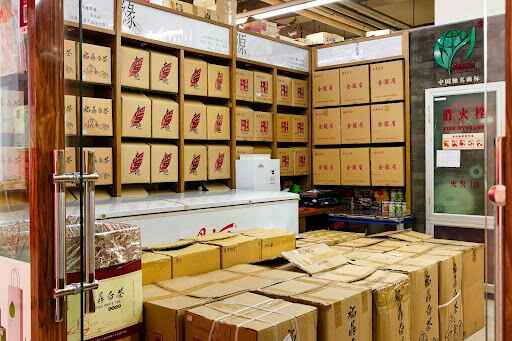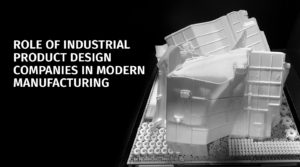Small and medium enterprises (SMEs) in Singapore face intense competition and razor-thin profit margins that make operational efficiency critical for survival. Yet many business owners overlook one of the most significant drains on their resources: poor inventory and storage management.
The clutter accumulating in office corners, overflowing storage rooms, and haphazardly organized warehouses represents more than just a messy workspace it’s a silent profit killer that impacts cash flow, productivity, and growth potential.
The True Cost of Office Clutter
Walk into most SME offices in Singapore and you’ll find filing cabinets bursting with documents, storage rooms packed with obsolete equipment, and valuable floor space consumed by inventory that could be stored more cost-effectively elsewhere.
This clutter isn’t just an aesthetic issue; it directly impacts your bottom line in ways that compound over time. Every square meter of your office or retail space costs money, and using that premium real estate for storage represents a fundamental misallocation of resources.
Consider a typical SME renting 1,000 square feet in Singapore’s business districts at $4-6 per square foot monthly. If 200 square feet is occupied by storage, boxes, and excess inventory, that’s $800-1,200 monthly spent on space that generates zero revenue. Annually, this adds up to $9,600-14,400 in rent alone money that could fund marketing campaigns, hire talent, or invest in growth initiatives.
Beyond direct rental costs, cluttered workspaces reduce employee productivity through visual distraction, increased stress levels, and time wasted searching for items. Research shows that employees spend an average of 4.3 hours weekly searching for documents or supplies in disorganized environments. For a team of ten people, that’s 43 hours of lost productivity weekly, equivalent to more than one full-time employee doing nothing but searching for misplaced items.
Lost Productivity: The Invisible Drain
The efficiency impact of poor inventory management extends far beyond physical searching. Employees working in cluttered, disorganized environments report higher stress levels and lower job satisfaction. This psychological burden translates directly into reduced focus, decreased creativity, and higher turnover rates that force businesses to spend more on recruitment and training.
Decision-making speed suffers dramatically when inventory data is inaccurate or inaccessible. Sales teams can’t confidently quote delivery timelines when they’re unsure what’s actually in stock.
Operations managers waste hours reconciling physical inventory with system records. Finance teams struggle to accurately value inventory for reporting purposes, potentially leading to tax complications or misguided strategic decisions.
The opportunity cost of management time spent on inventory issues is particularly damaging for SMEs. Business owners and senior managers dealing with storage problems, organizing cluttered spaces, or managing ad-hoc inventory solutions divert attention from revenue-generating activities.
Every hour spent wrestling with storage logistics is an hour not spent on business development, strategic planning, or customer relationships.
Document Management: Compliance and Risk

Singapore’s regulatory environment requires businesses to maintain detailed records for specified periods, seven years for most financial documents under the Income Tax Act. This legal obligation creates significant storage challenges for SMEs that must balance compliance requirements with limited office space.
Failing to maintain proper records can result in penalties, audit difficulties, and potential legal exposure that far exceeds the cost of proper storage solutions.
Paper documents deteriorate rapidly in Singapore’s humid climate without proper environmental controls. Important contracts, financial records, and legal documents can become illegible within months if stored in typical office conditions. This degradation creates compliance risks and can prove catastrophic if documents are needed for audits, legal proceedings, or business transactions.
Digital storage addresses some document management challenges, but complete digitization isn’t always practical or legally sufficient. Many businesses maintain hybrid systems requiring both physical and digital storage. Without strategic organization, these hybrid systems create confusion about which version is authoritative, where to find specific documents, and whether compliance obligations are being met.
E-Commerce and Inventory Challenges
The explosive growth of e-commerce in Singapore has created new inventory management challenges for SMEs. Online businesses need efficient fulfillment processes that balance inventory accessibility with cost-effective storage. Products sitting in expensive retail or office locations while awaiting shipment represent poor capital allocation and missed opportunities to optimize storage costs.
Fast-moving consumer goods require careful inventory rotation to prevent spoilage or obsolescence. Electronics and technology products depreciate rapidly, making excess inventory particularly costly. Fashion and seasonal items must be stored properly to maintain quality while minimizing holding costs during off-peak periods.
Order fulfillment speed directly impacts customer satisfaction and competitive positioning in Singapore’s demanding e-commerce market. Businesses that can’t locate inventory quickly, accurately pick orders, or efficiently pack shipments lose customers to competitors with superior operations.
These operational inefficiencies stemming from poor inventory management translate directly into lost revenue and damaged brand reputation.
Cash Flow Impact and Working Capital

Excess inventory ties up working capital that SMEs desperately need for operations and growth. Money invested in inventory sitting idle in storage generates zero return while preventing investment in marketing, product development, or business expansion. This capital inefficiency becomes particularly problematic during cash flow crunches when businesses need liquidity most.
Inventory carrying costs extend beyond the purchase price to include storage rent, insurance, shrinkage, obsolescence, and opportunity costs. These carrying costs typically range from 20-30% of inventory value annually.
For an SME holding $100,000 in inventory, that’s $20,000-30,000 in annual costs just to maintain those goods costs that could be significantly reduced through strategic storage and inventory optimization.
Stockouts caused by poor inventory visibility create another cash flow problem by forcing rushed orders, premium shipping costs, and potential customer defections. The cost of emergency procurement to fulfill customer orders often doubles or triples normal purchasing costs. Over time, these premium costs from reactive inventory management significantly erode profit margins.
Strategic Storage Solutions
Professional storage services offer SMEs a strategic alternative to inefficient in-office or warehouse storage. By moving slow-moving inventory, archived documents, seasonal items, and excess stock to cost-effective external storage, businesses can dramatically reduce occupancy costs while improving workspace functionality.
This approach transforms fixed real estate costs into variable storage expenses that scale with actual needs.
Singapore SMEs are increasingly turning to specialized Joy Movers storage for rent that provides flexible, secure, and climate-controlled solutions tailored for business needs. These professional facilities offer 24/7 surveillance, customizable space configurations, and convenient retrieval services that make external storage practical for daily operations.
The cost per square foot for professional storage typically runs 60-70% less than commercial office or retail space, creating immediate cost savings.
Climate control becomes critical for businesses storing sensitive inventory, electronics, documents, or products affected by Singapore’s tropical humidity. Professional storage facilities maintain consistent temperature and humidity levels that protect inventory value and ensure document preservation. This environmental control prevents the degradation, mold growth, and damage that commonly occur in standard office storage rooms or non-climate-controlled warehouses.
Scalability and Business Growth
Growing businesses face constantly changing storage needs that traditional leases can’t accommodate efficiently. Expanding inventory lines, seasonal fluctuations, and business growth spurts all create storage demand that’s difficult to predict. Flexible storage solutions allow SMEs to scale storage space up or down monthly without long-term commitments or capital expenditures.
This scalability proves particularly valuable for businesses experiencing rapid growth or testing new product lines. Rather than committing to larger office spaces prematurely, SMEs can maintain lean office footprints while using external storage for inventory and archives. This approach preserves cash, maintains operational flexibility, and reduces risk during expansion phases.
E-commerce businesses benefit especially from fulfillment-oriented storage solutions that combine warehousing with pick, pack, and shipping services. These integrated offerings allow online retailers to outsource logistics entirely, focusing resources on marketing, product development, and customer service rather than operational complexity.
The ability to quickly scale fulfillment capacity during peak seasons without maintaining year-round warehouse capacity dramatically improves economics.
Organization Systems and Inventory Accuracy
Proper storage organization requires systematic approaches that enable quick retrieval, accurate tracking, and efficient space utilization. Many SMEs lack the expertise, time, or resources to implement effective warehouse management systems independently.
Professional storage providers often offer inventory tracking, organized retrieval services, and systematic storage approaches that improve accuracy and accessibility.
Barcode systems, digital inventory management, and organized storage layouts transform inventory from a chaotic liability into a manageable asset. Knowing exactly what you have, where it’s located, and how quickly you can access it enables better purchasing decisions, improved customer service, and reduced carrying costs.
The operational improvements from systematic inventory management often justify storage costs through productivity gains alone.
Regular inventory audits become simpler with professionally managed storage where items are systematically organized and tracked. This improved visibility helps businesses identify slow-moving inventory, plan promotions to clear excess stock, and make data-driven purchasing decisions. Over time, these operational improvements significantly enhance profitability and cash flow management.
Security and Insurance Considerations
Business inventory and documents represent significant asset value that requires protection from theft, damage, and unauthorized access. Office storage rooms and ad-hoc warehouse arrangements often lack proper security measures, creating liability exposure and potential insurance complications. Professional storage facilities provide comprehensive security, including surveillance, access controls, and proper insurance coverage.
Singapore’s tropical climate poses particular risks for stored goods through humidity damage, pest infestation, and temperature fluctuations. Items stored in typical office environments without climate control face accelerated degradation that reduces value and creates potential losses. Professional facilities designed for tropical conditions mitigate these environmental risks effectively.
Insurance coverage for business property often requires specific storage conditions and security measures. Failure to meet these requirements can void coverage or result in denied claims after losses. Professional storage facilities typically meet or exceed insurance requirements, ensuring full coverage and reducing premium costs through superior risk management.
Implementation Strategy
Transitioning to strategic storage solutions requires careful planning and execution. Begin by conducting a comprehensive inventory audit to identify what you’re storing, its value, access frequency, and optimal storage location. Categorize items into daily-access, weekly-access, monthly-access, and archive categories to determine appropriate storage strategies for each.
Calculate your current all-in storage costs, including rent allocation, management time, insurance, and efficiency losses from clutter. Compare these figures against professional storage costs adjusted for improved productivity and reduced occupancy requirements. This analysis typically reveals substantial savings potential that justifies transition investments.
Develop retrieval protocols that balance accessibility with cost efficiency. Items needed daily obviously require office proximity, but monthly or annual access items can be stored remotely with scheduled retrieval. Professional storage providers often offer same-day or next-day retrieval services that make external storage practical even for moderate-frequency access needs.
Long-Term Business Impact
Strategic storage management creates compounding benefits over time through improved cash flow, enhanced productivity, and better scalability. SMEs that optimize storage early establish operational foundations that support sustainable growth.
These businesses avoid the storage crises that plague rapidly growing companies and maintain efficient operations regardless of business size.
The reputational benefits of organized, professional operations shouldn’t be underestimated. Clients visiting cluttered, disorganized offices question business competence and professionalism.
Clean, efficient workspaces project success and attention to detail that enhances brand perception and supports business development.
Environmental sustainability increasingly matters to Singapore businesses and their customers. Efficient storage that reduces real estate consumption, enables better inventory management, and prevents waste through proper preservation aligns with sustainability goals while improving economics.
This alignment allows SMEs to enhance profitability and environmental responsibility simultaneously.
Conclusion
The hidden costs of business inventory mismanagement drain SME resources through excessive rent, lost productivity, compliance risks, and operational inefficiency.
These costs compound over time, constraining growth and reducing competitive positioning in Singapore’s dynamic business environment. Strategic storage solutions offer practical alternatives that transform these hidden costs into operational advantages.
Professional storage services provide cost-effective, flexible, and secure solutions that enable SMEs to optimize workspace utilization, improve inventory management, and scale operations efficiently. The investment in proper storage management pays dividends through improved cash flow, enhanced productivity, and reduced operational stress.
For Singapore SMEs serious about sustainable growth and operational excellence, strategic storage isn’t optional; it’s essential infrastructure that separates thriving businesses from struggling competitors.
The question facing SME owners isn’t whether proper storage management matters, but rather how quickly they can implement solutions that unlock trapped capital, improve operations, and position their businesses for growth.
Those who act decisively gain competitive advantages that compound over time, while those who delay continue paying hidden costs that erode profitability and constrain potential.





Be First to Comment